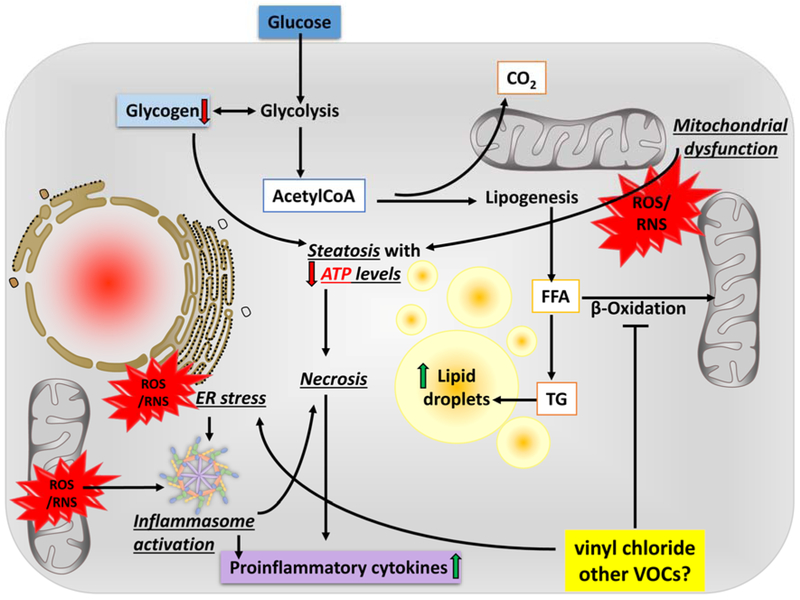Figure 2.
Potential mechanism(s) of liver injury by VOC exposure.
Upon exposure to VC, reactive intermediates form though bio activation processes and diet-induced obesity decreases their elimination. Through carbonyl stress and the generation of reactive oxygen and nitrogen species (ROS/RNS), VC metabolites cause ER stress leading to mitochondrial damage, which impairs oxidative phosphorylation; the cell increases flux through glycolysis to compensate for this loss of ATP yield. The increased demand for glucose depletes glycogen stores. AcetylCoA is being shunted to lipid synthesis (causing steatosis) rather than β-oxidation, even under conditions of ATP depletion, resulting in an increase in lactate production. The combined metabolic stress of VC exposure and ATP depletion likely causes ‘liponecrosis’ associated with increased oxidative stress, ER stress, and inefficient mitochondrial respiration and energy production.

